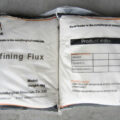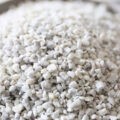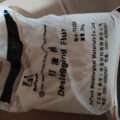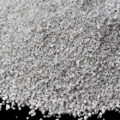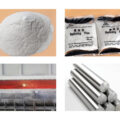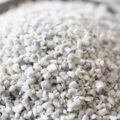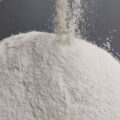Aluminum Alloy Degassing Flux is mainly used to remove hydrogen and scum in molten aluminum, and purify high temperature aluminum alloy melt. Its basic function is to remove internal inclusions and hydrogen from high temperature melt.
As a result, molten aluminum becomes simpler. Some members of the aluminum concentrate are easy to decompose at high temperature. The gas produced reacts with hydrogen and strongly adsorbs the slag, which can be quickly separated from the melt to remove the slag.

The degassing agent can be used in all kinds of aluminum alloy melts, smelting, refining and slagging of pure aluminum. When in use, only need to sprinkle the refining agent on the surface, and then quickly dissolve in the liquid aluminum, and then fully stir. It is preferable to inject the purifying agent with inert gas, for example, nitrogen or argon can be selected. So that the liquid aluminum becomes more simple and has the effect of slag removal. Part of the refining agent is easy to decompose at high temperature, and the generated gas reacts with hydrogen to strongly absorb the slag, which can quickly separate from the melt and remove the slag.
Aluminum alloy degassing flux has the advantages of smokeless, tasteless, dust-free, and easy operation. For example, the special cleaning agent for smelting process is good, and the equipment is not corroded. The purification agent has a good degassing effect. Aluminum ash is dry, loose, and light in weight. It is well separated from aluminum alloy liquid and easy to remove.
The refining agent is melted with a low eutectic point ratio, dehydrated and melted at high temperature, and the high melting point inorganic salt is processed to produce low melting point mixed inorganic salt, which is cooled and crushed into powder. The method of drying and mixing the purified flux is to fully dry and dehydrate the inorganic salt, and add it into the components that are conducive to dehydrogenation and deslagging according to the distribution proportion of eutectic point of the molten salt. This method is easy to produce, but the quality of refined flux is poor. Common raw materials such as sodium chloride, sodium carbonate, potassium chloride, magnesium chloride, etc. The manufacturing process of refining flux drying and mixing: drying – raw material – mixing – Packaging – finished product.

